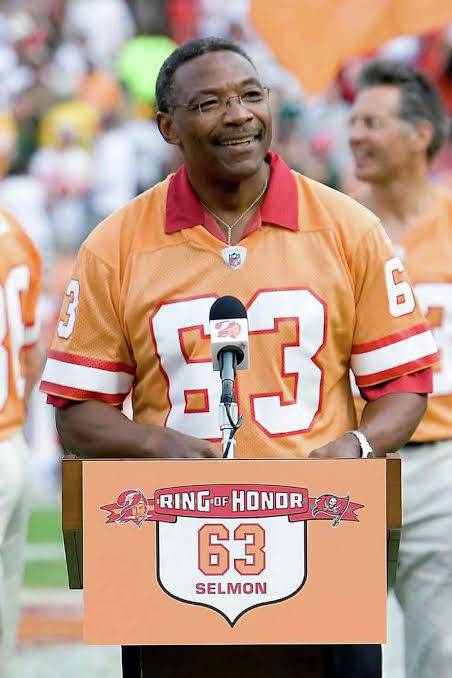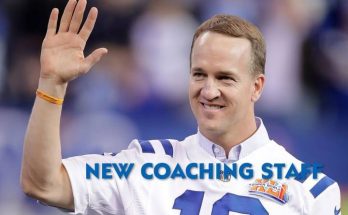In a powerful gesture of unity, legacy, and celebration, the University of Oklahoma Sooners and the Tampa Bay Buccaneers have come together to declare a new annual tradition—“Lee Roy Selmon Day”—honoring one of the greatest and most beloved figures in American football history. This joint proclamation is more than just a ceremonial nod; it is a heartfelt tribute to a man whose contributions to the sport, his community, and the world around him continue to ripple far beyond his years on the gridiron.
The announcement was made during a moving ceremony held at both Gaylord Family Oklahoma Memorial Stadium and Raymond James Stadium in Tampa, where fans, family, former teammates, university officials, NFL representatives, and civic leaders gathered to pay homage to the late Lee Roy Selmon—the first-ever draft pick of the Tampa Bay Buccaneers and a foundational force behind Oklahoma’s storied football tradition.
A Football Titan With a Gentle Soul
Lee Roy Selmon’s name resonates with power, poise, and principle. A towering defensive end with rare intelligence and athletic grace, Selmon was more than just a star athlete—he was a symbol of humility, dignity, and excellence. Born on October 20, 1954, in Eufaula, Oklahoma, the youngest of nine siblings, Selmon emerged from modest beginnings to achieve national stardom.
At the University of Oklahoma under the legendary Barry Switzer, Selmon became the heart and soul of the Sooners’ fearsome “Selmon Brothers” defensive unit, playing alongside his brothers Lucious and Dewey. He was a key force behind Oklahoma’s 1974 and 1975 national championship teams, earning the Outland Trophy and the Lombardi Award during his senior year in 1975. Selmon became Oklahoma’s first-ever No. 1 overall NFL Draft pick when the expansion Buccaneers selected him in 1976.
From Sooner Crimson to Buccaneer Pewter: A Legend Emerges
In Tampa Bay, Selmon quickly established himself as the cornerstone of the fledgling franchise. Despite the team’s early struggles, Selmon’s relentless motor, peerless technique, and unwavering leadership transformed the Buccaneers into contenders. By 1979, Tampa Bay had shocked the league by reaching the NFC Championship Game, and Selmon had firmly entrenched himself as the most dominant defensive end in the NFL.
He finished his NFL career with 78.5 sacks, was a six-time Pro Bowler, and earned NFL Defensive Player of the Year honors in 1979. In 1995, Selmon’s achievements were immortalized with induction into the Pro Football Hall of Fame, a well-deserved honor that recognized both his statistical impact and the deeper legacy he left behind.
But numbers never defined Selmon. What truly set him apart was the way he carried himself—with quiet confidence, steadfast faith, and an innate kindness that touched everyone around him.
Honoring a Legacy Beyond the Field
The creation of “Lee Roy Selmon Day,” now set to be celebrated every year on October 20—Selmon’s birthday—is designed to honor not just the athlete, but the man behind the helmet. Speaking at the announcement event, Oklahoma athletic director Joe Castiglione reflected:
“Lee Roy was more than the best defensive player in our school’s history—he was the embodiment of what we hope every Sooner becomes: a leader, a servant, and a man of extraordinary character. This day is a small way to ensure that future generations know who Lee Roy Selmon was and why he mattered.”
Buccaneers owner Bryan Glazer echoed that sentiment from Tampa:
“He gave our franchise credibility, dignity, and an example to follow. Whether it was in the locker room, the community, or later as a civic leader, Lee Roy always put others first. ‘Lee Roy Selmon Day’ is a celebration of the standard he set.”
Selmon’s wife, Claybra, and their children were in attendance and visibly moved by the tribute. “He would be so honored by this,” she said, holding back tears. “But he’d want the focus to be on encouraging others to serve their communities, chase their dreams, and treat people with love and respect.”
The “Selmon Standard”: Values That Transcend Generations
After retiring from the NFL in 1984 due to back injuries, Selmon remained in Tampa and embarked on an equally impactful second act. He became Assistant Athletic Director at the University of South Florida (USF) and was later named Athletic Director, where he spearheaded the creation of the school’s football program in 1997—a transformative achievement that has elevated the school’s national profile.
Selmon was also a prominent business and civic leader in the Tampa Bay area, known for his philanthropic work and commitment to youth education. His beloved chain of Lee Roy Selmon’s restaurants served up more than just food—they became gathering places for fans, families, and communities to connect over shared values and stories of greatness.
The establishment of “Lee Roy Selmon Day” will now include community service events, educational symposiums, youth football clinics, and charity fundraisers hosted in both Norman, Oklahoma and Tampa, Florida. Local schools and universities will participate in programs that explore Selmon’s values, with a special emphasis on leadership, sportsmanship, and civic responsibility.
NFL and NCAA Embrace the Movement
Both the NFL and NCAA have pledged to promote and support “Lee Roy Selmon Day” across the country. The NFL will spotlight Selmon’s legacy during Tampa Bay’s closest home game to October 20, while the Sooners plan to wear commemorative helmet decals and honor him with a halftime ceremony each year.
Oklahoma head coach Brent Venables spoke passionately about the example Selmon still sets:
“We talk to our players all the time about being more than just football players. Lee Roy lived that. He was a once-in-a-generation player and a once-in-a-lifetime human being.”
NFL Commissioner Roger Goodell, in a prepared video message, emphasized the league’s pride in celebrating Selmon:
“Lee Roy Selmon’s name is synonymous with excellence—on the field, in the community, and in life. We’re honored to support this day in recognition of a Hall of Fame player and even greater person.”
Remembering the Man, Not Just the Myth
Lee Roy Selmon passed away in 2011 at the age of 56 after suffering a stroke, leaving behind a legacy of love, service, and inspiration. His funeral drew thousands, including NFL greats, university officials, clergy, and fans who lined the streets of Tampa in mourning and celebration. The Selmon Expressway—a major Tampa thoroughfare—was named in his honor shortly after.
Yet what those who knew him best remember isn’t his sack count or trophies—it’s the way he greeted janitors the same as coaches, the time he took to mentor young players, and the unshakable faith that grounded him.
Former teammate Doug Williams, who was Tampa Bay’s first Black quarterback and a Super Bowl MVP, recalled:
“He was the kind of guy you wanted to play for, pray with, and just be around. He didn’t say a lot, but when he did, you listened. And you knew he meant it.”
Looking Ahead: A Living Legacy
As the inaugural “Lee Roy Selmon Day” approaches this October, preparations are underway for events in both Norman and Tampa that will honor his legacy while also serving communities—just as Selmon himself would have wanted.
Among the highlights:
- A Selmon Leadership Summit for student-athletes.
- A joint Sooners-Buccaneers community outreach project focused on food insecurity.
- A special ESPN documentary titled “Quiet Strength: The Lee Roy Selmon Story,” airing in conjunction with the holiday.
In the words of current Buccaneers head coach Todd Bowles:
“You don’t replace a guy like Lee Roy. You just try to live up to his example. This day is a reminder that greatness isn’t just about what you do—it’s about how you do it, and who you lift along the way.”
Final Thoughts
The declaration of Lee Roy Selmon Day is more than a memorial—it is a call to action. It is a beacon for athletes, students, and citizens to strive for excellence while walking humbly, giving generously, and leading boldly.
In a world often obsessed with statistics and spotlight, Lee Roy Selmon’s life reminds us that true greatness shines in quieter, deeper places—in how we treat others, how we give back, and how we rise above adversity with grace.
And now, every October 20, from the heart of Oklahoma to the shores of Tampa Bay, generations will pause to remember—and be inspired by—the man who redefined what it means to be great.



